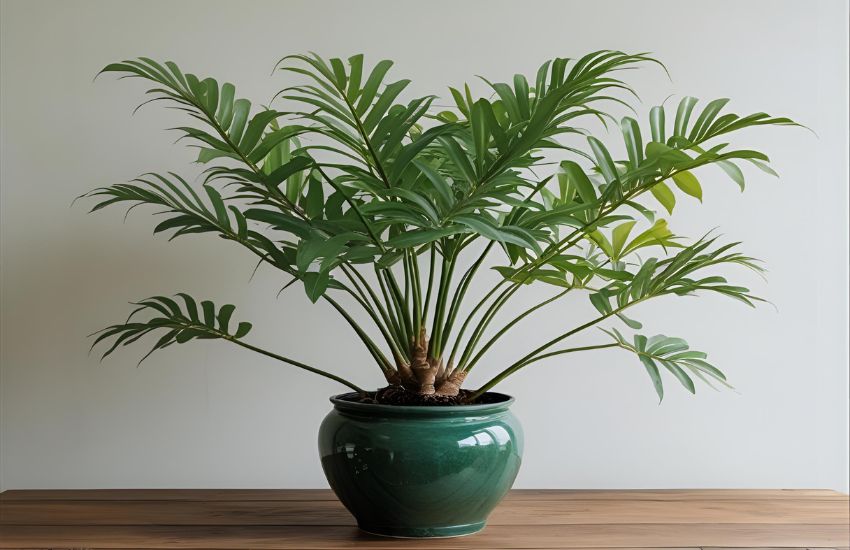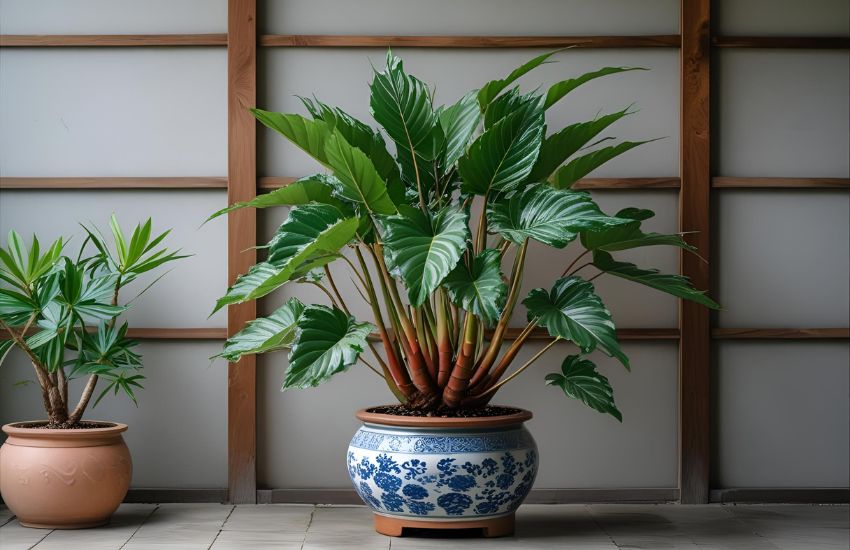Looking for a stunning houseplant that adds low-maintenance elegance to your indoor space without demanding too much of your time? The Aglaonema Queen Plant, a variety of the popular Chinese evergreen, might be exactly what you need. Known for its striking foliage and dependable nature, this evergreen beauty is a favorite among both novice and experienced plant lovers. Whether placed in your garden nook or a cozy indoor corner, the Aglaonema’s lush presence is hard to ignore.
This low maintenance plant doesn’t ask for much—just the right soil, a well-draining pot, and consistent care when it comes to water, humidity, and light. It adapts well to low light conditions, thrives in indirect light, and dislikes direct sunlight, making it perfect for shaded spaces. As a tropical perennial, it performs well throughout the growing season, especially with the right fertilizer and without the risk of overwatering or root rot.
In this comprehensive guide, you’ll learn how to care for your aglaonema like a pro, tackle common problems, and find answers to your most important aglaonema FAQs—from propagation to choosing the perfect pot. Let’s help your evergreen thrive.
How to Care for Your Aglaonema Queen Plant : A True Low Maintenance Evergreen

The Aglaonema plant, particularly the elegant Aglaonema ‘Silver Queen’, is celebrated for being a truly low maintenance evergreen houseplant. With its soft green leaves and silver patterns, it brings subtle tropical charm into your space without requiring intensive upkeep. This detailed care guide will help you create the right conditions for your plant to thrive, even if you’re new to indoor gardening.
Light is a critical factor. Although Aglaonemas adapt well to various lighting conditions, they grow best in filtered indirect light. They’re also suited for low-light areas, making them ideal for apartments, offices, or shaded corners. However, direct sun exposure can harm the foliage, causing it to fade or burn. These tropical plants enjoy warm temperatures and gentle humidity. Keep the soil moist but not soggy, using a well-draining potting mix to prevent root rot and other issues like yellow leaves. Always check the top inch of soil before watering, and avoid overwatering.
Repotting should be done every couple of years or when the roots start crowding. Use a pot with drainage holes and refresh the potting mix to give your plant room to grow. While Aglaonema Silver Queen is a hardy plant, pests like mealybug and spider mites can still appear, especially in dry indoor conditions. Address infestations quickly with neem oil or natural insecticidal treatments. Be cautious—this plant is toxic if ingested, so place it out of reach of pets and children.
The Chinese evergreen plant, also known as the Chinese evergreen, owes its popularity to generations of gardeners who value its beauty and resilience. Its lush variegation and air-purifying qualities make it a valuable addition to any indoor collection. Whether you’re caring for a single specimen or growing a group of aglaonemas, the key lies in consistent care, patience, and attention to small details.
See more about… Aglaonema Pink Beauty Plant
Common Problems with Aglaonemas and How to Fix Them Fast

Despite being a resilient and low-maintenance houseplant, Aglaonemas—often called Chinese evergreen—can still encounter a few issues that affect their growth and appearance. Recognizing these problems early and applying the right solution can keep your plant healthy and thriving. Below are some of the most common challenges you might face and how to fix them promptly.
Yellowing or Drooping Leaves
Yellow leaves or drooping foliage are often signs of overwatering, leading to potential root rot. Aglaonemas prefer their soil moist, but not soggy. Always check the top inch of soil before watering again. If your plant’s roots are sitting in waterlogged conditions, consider repotting into fresh, well-draining soil to avoid further damage. If root rot is detected—typically by a foul smell and mushy roots—trim the affected parts and treat the healthy roots with a fungicide before repotting.
Loss of Variegation
If your green leaves are losing their signature variegation, the most likely cause is insufficient light. While Aglaonemas can tolerate low-light settings, their patterns tend to fade without enough brightness. Move your plant to a spot with brighter light, ensuring it’s indirect to prevent scorching. Proper lighting helps maintain those beautifully variegate patterns that make this plant so eye-catching.
Pest Infestations
Though generally pest-resistant, Aglaonemas can sometimes attract unwanted guests like aphid or mealybugs, especially in dry indoor environments. These pests can damage the foliage and stunt growth. Use insecticidal soap or neem oil to eliminate infestations. Regularly wiping the leaves can also prevent buildup of dust and pests.
Brown Leaf Tips or Edges
Brown tips are usually a sign of low humidity levels, which can stress this tropical plant. To maintain ideal humidity, use a pebble tray filled with water beneath the pot, or consider a small humidifier nearby. This is particularly helpful during winter or in air-conditioned rooms.
Stunted Growth or Cramped Roots
If your Aglaonema shows minimal new growth and becomes root-bound, it’s time to repot—ideally every 2–3 years. Choose a pot one size larger and refresh the soil to give roots more space and nutrients. This will rejuvenate the plant and encourage new, vibrant greenery.
Conclusion
Caring for your Aglaonema doesn’t need to be complicated. With its silvery-green foliage, adaptable nature, and forgiving temperament, this indoors favorite remains one of the most reliable houseplants for beginners and seasoned plant lovers alike. However, like any living thing, it may encounter a few common problems—from leaf discoloration and pest issues to environmental stressors like cold drafts or overly dry air during the winter months. Knowing how to respond quickly and correctly can make all the difference in helping your plant thrive.
Always pay close attention to changes in your plant’s appearance. Yellowing, light green fading, or unusual leaf marks may be signs of trouble. Also, be cautious if you have pets or small children, as Aglaonemas contain calcium oxalate, which may cause mild irritation if touched or ingested. Still, with the right care, your Aglaonema can easily outshine any faux plant, offering real, long-lasting beauty year-round.
